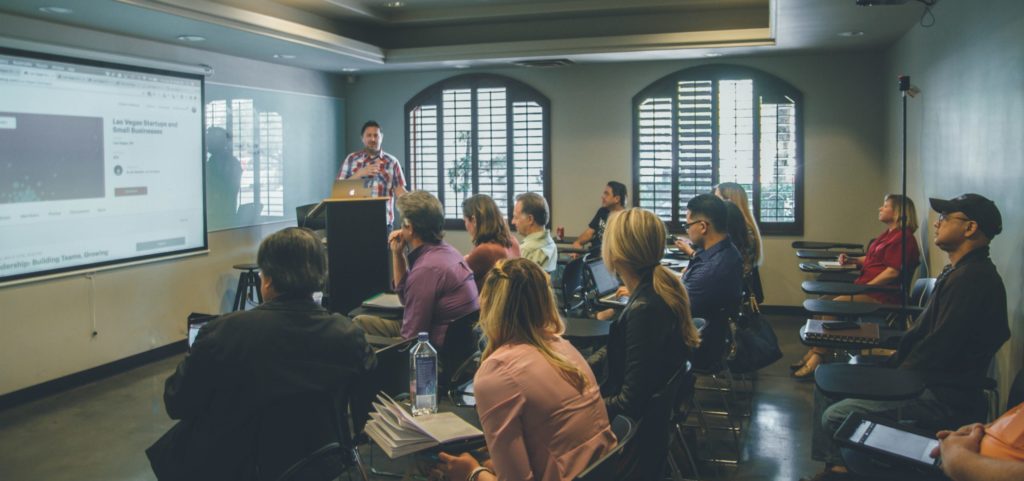All higher education institutions collect data about students, from classroom attendance to grade performance and beyond. But what if we could analyse this data to gain intelligent insights, optimise learning experiences, and drive stronger engagement?
A specialised model known as learning analytics makes this all possible.
By reading this article, you’ll learn more about learning analytics, why it’s important, and how you can use the model to improve outcomes within your classroom.
What is learning analytics?
Learning analytics refers to the collection, measurement, and analysis of data about learners and the environments or contexts in which they learn. It is a form of educational technology that aims to understand and optimise learning to provide the best outcomes for students and educators.
Analysing performance data can help you create powerfully personalised learning experiences for each student, catering to their unique abilities, interests, needs, and expectations.
Universities and higher education institutions have collected data about students for decades, but researchers have only recently discovered how to tap into this information. The learning analytics models and technologies today allow skilful analysts to derive real, useful information from millions of data points.
Learning analytics typically comes in the form of an LMS or learning management system. To understand student behaviour, these systems track data such as clicks, time on task, information flow, and navigation patterns. It also conducts social network analysis, which analyses student behaviour among social networks.
How is learning analytics used in higher education?
Learning analytics is an incredibly useful tool in the higher education sphere, especially in our new world of online learning and hybrid learning. It allows educators and institutions to learn more about students, including how well they perform, their path through the learning process, and whether courses meet their expectations.
Some other valuable insights educational institutions can unlock through learning analytics include:
- Learning patterns and progress
- Forecasted academic success
- Retention rates and engagement levels
- Evidence-based suggestions and solutions
- Individual student risk
- Resource use and utility
Conducting a knowledge conference on learning analytics is a great way to introduce higher education staff to these data points and their meaning.
This information benefits students, educators, administrators, and researchers alike. By monitoring behavioural patterns, tracking changes, and comparing student progress, we can see how well individual students and programs perform.
With this information in tow, learning institutions can make informed changes to improve course outlines, boost engagement, and enhance graduate outcomes.
Why is learning analytics important?
Learning analytics research is important because no two students are the same. As outlined by educational theorist David Kolb and many of his contemporaries, all students have unique learning styles influenced by their environment, culture, social experiences, and basic cognitive structures.
Educational data mining allows us to personalise learning to fit each learner’s distinct learning style. This approach also helps students connect with learning materials in a more meaningful, personal way, which is key to motivation and engagement.
For educators and universities, analytics unlock vital insights that pave the way for impactful improvements based on real data.
Benefits of learning analytics
Now, let’s go into more detail about the enormous benefits learning analytics delivers for universities, educators, and students.
Boosts student retention and well-being
If students struggle to understand a course’s content, or don’t feel supported or encouraged in class, they’re unlikely to succeed. Retention rates will wane and the student’s well-being will suffer, leading to poor results and dropouts.
Learning analytics helps universities better understand student needs and identify potential risks. Recognising these risks early on allows educators to intervene, offering personalised support, leadership, and advice before serious educational challenges arise.
Improves student learning
According to the self-determination theory (SDT), there are two elements involved in human motivation—intrinsic and extrinsic. Intrinsic factors include passion, sustained efforts, and curiosity, while extrinsic factors include rewards, fears, and grades or evaluations.
According to the SDT, the three main factors aspects involved in intrinsic motivation are relatedness, competence, and autonomy. These experiences drive students to engage more deeply with activities, leading to enhanced performance, creativity, and persistence.
Learning analytics provides a lens into students’ self-determination levels, highlighting potential gaps. For example, if a student isn’t feeling connected (or related) to course content, learning analytics will make this clear. Educators can then use this data to reposition course content in a more meaningful and relevant way, such as through gamification or project-based learning.
Identifies students at risk
Some students may be at risk of failing, dropping out, or otherwise struggling to complete their coursework successfully. Identifying these risks early on helps prevent bigger problems from happening in the future.
Potential warning signs include:
- Late assignment submission
- Low or non-attendance
- Poor or uncharacteristic performance
With many educators managing many students at once, it can be hard to keep track of these warning signs. Thankfully, a learning analytics tool can identify and alert you to these behaviours as soon as they crop up so you can offer extra support.
Assists in decision-making
Effective decision-making is difficult without concrete evidence to back it up. This is where learning analytics really shines—it can help you make choices based on factual, measurable, and actionable student data.
For example, if your institution must decide whether or not to cancel a subject, you can use data such as attendance rates, engagement rates, and enrolments to determine if continuing the subject is worthwhile.
Personalises learning experiences
Students learn in unique ways. Some may take in information visually, while others may need to experiment and physically engage to fully understand a topic.
Through learning analytics, you can create personalised learning experiences that tap into students’ individual needs, expectations, desires, and interests. Some ways to achieve this include collecting learner feedback, presenting and analysing the success of different learning modalities, and measuring retention rates.
Unlocks effective learning
According to Northern Illinois University’s Center for Effective Teaching and Learning, the core principles of effective learning are:
- Communication
- Cooperation and reciprocity
- Active learning and immersive learning
- Quality feedback
- Time on task
- Clear expectations
- Diversity and inclusion
Because learning analytics reveal detailed information about students on an individual basis, we can use the data to achieve and maintain these core principles. Further, we can identify any gaps in these areas—such as poor or nonreciprocal communication—and make respective improvements.
What are the different types of learning analytics?
There are four main types of learning analytics. Let’s discuss what they are and what’s involved now.
Descriptive analytics
Descriptive analytics involves unlocking insights into past behaviours. Using data mining and aggregation, this approach identifies trends over time, such as:
- Student feedback,
- Data across all stages of student life, from admission to graduation
- Past student behaviour patterns,
- Course results over time.
Comparing historical data with current measurements is a great way to understand which changes have occurred within a learning institution—and whether or not they’ve been effective.
Diagnostic analytics
Diagnostic analytics aims to answer the ‘why’ questions, like ‘why did this happen?’ and ‘why does this need improvement?’
It involves using data discovery, mining, and correlations techniques to:
- Inform and enhance key point indicators (KPIs) within an educational institution,
- Analyse engagement and performance metrics,
- Determine the cause of poor attendance rates or grades,
- Identify areas of risk
Once you’ve identified trends via descriptive analytics, your institution can use diagnostic analytics to understand why these trends happen and how to resolve or enhance them.
Predictive analytics
Predictive analytics is all about—you guessed it—prediction! It involves looking at past and present data to make informed hypotheses about what might happen in the future.
Advanced learning management systems use machine learning techniques, statistical models, and algorithms to forecast these trends. It may predict:
- Student numbers,
- Interest in an upcoming program,
- Cohort mobility,
- Expected grade averages.
Forecasting can help educators and institutions make better decisions and create informed strategies to deliver education in ways students need, want, and understand.
Prescriptive analytics
Finally, prescriptive analytics is all about taking the data gathered through predictive analytics and using it to make informed choices for the future. It answers the question, “what’s the next step?”
Using a mix of machine-learning algorithms and expert human analysis, prescriptive analytics reveals optimal teaching and learning practices.
For your university or higher education institution, prescriptive analytics could unlock:
- Ways to increase interest in a course,
- How to improve graduate outcomes,
- Suggestions for increasing course results.
Examples of learning analytics
Let’s make things a little clearer with a few examples.
According to Learning Analytics in Higher Education, the New York Institute of Technology (NYIT) found three out of four students who didn’t proceed to their next year of study were predicated as ‘at risk’ by the learning analytics model.
In the same way, you can use predictive analytics to identify at-risk students and provide support or prepare for fewer enrolments the following year.
Educators may also use learning analytics to analyse, understand, and improve their own practice. For example, you might identify through student feedback, attendance, and results that a particular class isn’t interesting or engaging. You can use this information to realign your course plan to meet student needs.
How Practera can help
At Practera, we understand data is the key to unlocking better opportunities for students, educators, and universities. That’s why we offer services for authentic industry experience programs, powered by technology-driven solutions to deliver real-world learning.
Through Practera, you can create transformative programs to keep your students engaged, motivated, and connected with outstanding graduate opportunities. With our experience programs and project-based learning, we help leading institutions around the world deliver high-quality industry projects at scale & cost-effectively.
Our platform makes delivery robust yet simple, providing detailed learning analytics and feedback so you can optimise learning experiences and empower your students with career-ready skills.
To discover how Practera can help you, start a conversation with a member of our friendly team today. You can also download our project-based learning white paper to find out more. You can also trial our industry experience program for free for a short time here.
Boost your skills and employability with Practera and learn more about the importance of experiential learning today.




